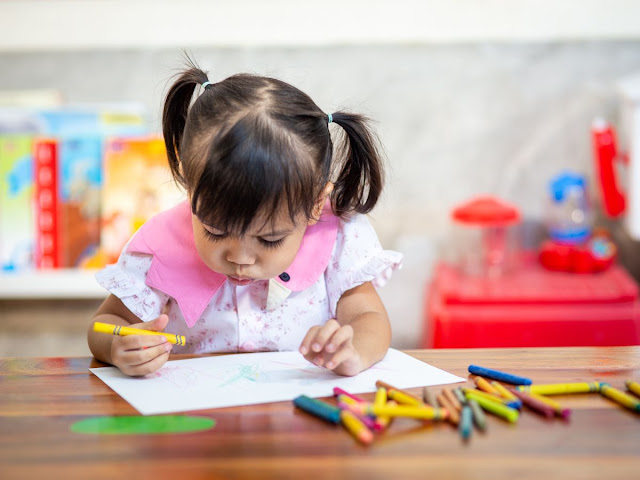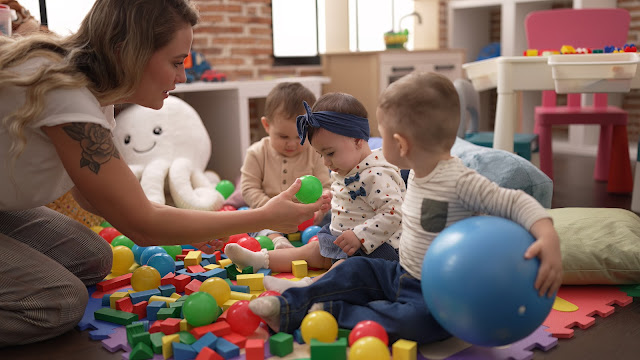Timing Your Child’s First Step Into Daycare What You Need to Know
The decision to send your child to daycare is a significant milestone for both parents and children. It’s a choice that often comes with a mix of excitement, anxiety, and countless questions. One of the most common questions parents face is: When should kids start daycare? The timing of this transition is critical, and finding the right time for your child depends on various factors such as their age, developmental needs, and family circumstances.
In this article, we’ll discuss the key considerations for parents when timing their child’s first step into daycare, offering practical advice to make the process smoother for everyone involved.
1. Understanding the Benefits of Daycare
Before diving into the specifics of timing, it's important to understand the benefits of daycare. High-quality daycare programs provide several key advantages:
Socialization: Daycare allows children to interact with peers, helping them develop social skills like sharing, taking turns, and communication.
Early Childhood Education: Many daycare programs offer educational activities that can stimulate your child’s cognitive and motor skills.
Structure and Routine: Daycare introduces a structured environment with predictable routines, which can be helpful for both children and parents.
Parental Support: Sending your child to daycare allows you to return to work or focus on other responsibilities, which can be a huge relief for many parents.
2. When Should Kids Start Daycare?
When should kids start daycare? depends on several factors, including your child’s age, emotional readiness, and family situation. Here are a few guidelines to help you decide the right time for your child:
a) Infants (0-12 Months)
For infants, the question of daycare timing is complex. Most experts suggest waiting until your child is at least six months old before starting daycare. During the first few months, babies require a lot of personal attention, and their immune systems are still developing, making them more vulnerable to illnesses. However, by six months, babies are generally more resilient and have started developing stronger immune systems.
In addition, babies begin to develop social and emotional attachment during the first few months, so a gradual transition to daycare, starting with part-time care, may be a better approach.
b) Toddlers (1-2 Years)
Toddlers, aged 1-2 years, are often more independent than infants, but they are still in a stage where they need emotional support and strong attachment to their caregivers. This is the age where they start forming their identities and learning language skills, making daycare a good option for early development.
The ideal time for toddlers to start daycare can vary, but many parents find that starting daycare around 12 to 18 months provides the right balance of emotional readiness and developmental benefit. At this age, children are curious, active, and more engaged with the world around them, so daycare can offer enriching experiences for them to explore, play, and learn.
c) Preschoolers (3-5 Years)
Preschoolers are generally more independent and can handle longer hours in daycare settings. By the time children reach the age of 3 years, they are ready for more structured environments that involve group play, learning activities, and peer interactions.
This is also a time when children’s social skills and cognitive abilities rapidly develop, and daycare can provide a great opportunity to enhance these areas through activities that encourage creativity, critical thinking, and cooperation with other children. For parents who need full-time daycare or are preparing their child for kindergarten, this age group is often ideal.
d) Readiness Signs
Regardless of age, parents should observe signs of emotional and developmental readiness in their children. If your child is displaying the following behaviors, they may be ready for daycare:
Separation readiness: If your child is able to cope with short separations from you, such as when you leave them with a trusted relative or friend, they may be ready for daycare.
Social curiosity: When children start to engage with other kids and show interest in group activities, it’s a sign they may enjoy daycare settings.
Potty training: While not always a requirement, being partly or fully potty trained can make the transition to daycare easier, especially if the facility does not provide diapering services.
3. Transitioning Your Child to Daycare: Tips for a Smooth Start
Once you’ve determined the right time for daycare, it’s essential to plan for a smooth transition. The first few days can be emotional for both parents and children, so here are some tips to make the process less stressful:
a) Visit the Daycare Ahead of Time
Before starting, schedule a visit to the daycare with your child. This gives both you and your child the opportunity to meet the caregivers, explore the environment, and familiarize yourselves with the routine. A positive first impression can help ease your child’s anxiety about the new experience.
b) Start Slowly
If possible, begin with half-days or part-time care and gradually increase the amount of time your child spends at daycare. This allows both you and your child to adjust to the separation.
c) Be Consistent
Children thrive on routine, so try to keep your drop-off and pick-up times consistent. A predictable routine will help your child feel more secure and comfortable in the daycare environment.
d) Comfort Items
Consider sending your child a familiar comfort item, such as a favorite blanket, stuffed animal, or picture of the family. These items can offer comfort and reassurance during the transition.
e) Communicate With Caregivers
Keep an open line of communication with daycare providers. Share important information about your child’s preferences, habits, and any concerns you may have. Likewise, stay updated on how your child is adjusting to daycare.
4. Dealing with Separation Anxiety
It’s common for children to experience some separation anxiety when they first start daycare. The following strategies can help:
Positive language: Talk about daycare in a positive light and explain the fun activities they will be doing.
Quick goodbyes: Try to avoid drawn-out goodbyes. A quick, confident departure is often less stressful for both you and your child.
Reassurance: Remind your child that you will return at the end of the day. Over time, they will learn to trust that you will always come back.
Conclusion
Deciding when to send your child to daycare is a personal decision that depends on many factors, including their age, emotional readiness, and the needs of your family. While there is no one-size-fits-all answer, understanding your child’s developmental milestones and recognizing the signs of readiness can help guide your decision. Whether you’re sending an infant, toddler, or preschooler, a gradual transition, open communication, and a positive mindset can make all the difference in ensuring your child’s first step into daycare is a successful one.
Remember, the best time for your child to start daycare is when both you and your child feel comfortable with the transition.



Comments
Post a Comment